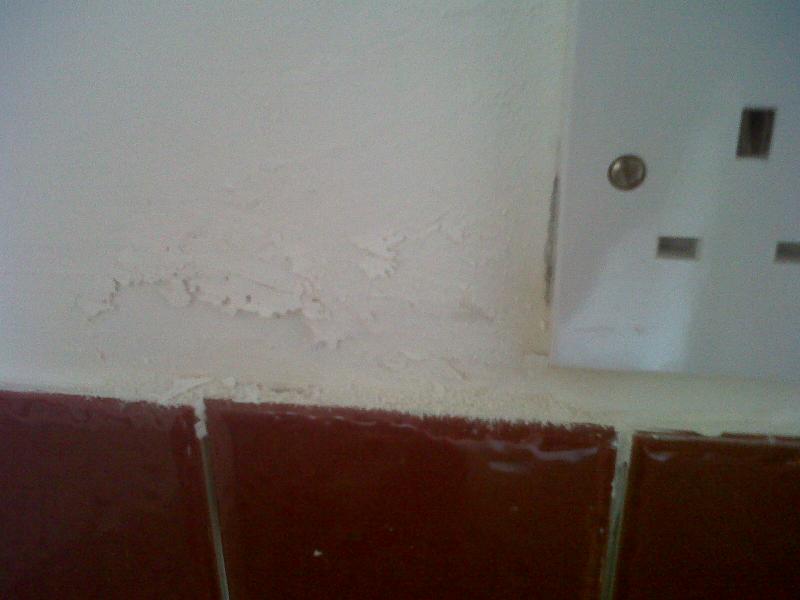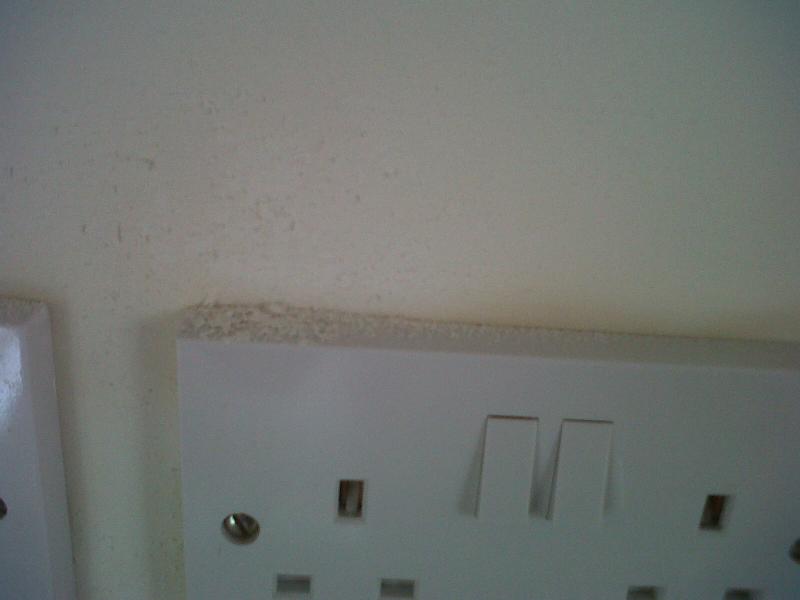Hi All,
I've got a really strange problem and was wondering if anyone knew the answer. About 2 years ago I began a full conversion of a house into two flats. I'm fairly competent at most DIY and did everything (bar gas and electrics) myself. Obviously it takes much longer this way, but I was on a really tight budget. Anyway I skimmed over an existing wall approx. 20 months ago and fitted a kitchen in the room. About 6 months ago, a few random circles appeared in the wall, where the paint (which had been pva sealed) flaked off in a really fine dust. The circles varied in size (typically about 4inches across) and were mostly in the middle of the wall. I dug out the plaster where these had appeared and found in some cases an old rawl plug in the wall. I removed the plugs, pva'd the area, filled and skimmed this time with easi-fill, left to dry and sealed/ painted. Now 6 months later a few more have appeared some in different places and one in the original(where there are definitely no rawl plugs). I have also noticed the same flaking with a light brown staining coming up around where the edges of where the plug sockets are. After the sockets were chased out, I filled the edges flat with easi-fill and now this dark stain/flaking seems to be spreading from those too. The wall itself was an internal wall joining to next door. It was brick originally but was rendered with a solid type of cement render (but very hard to chip off) and none of the external walls have any problems (they were plaster-boarded with the foam-backed board for building regs). The rest of the project is at last finished, but I don't want to rent it out with these patches. I also don't really want to strip the whole wall back to brick and start again as obviously that means gutting the new kitchen. I thought first time maybe it was a reaction with some form of salt from the brickwork, but the truth is I don't really have a clue. Any ideas? All feedback, even if only on how to cover it permanently would be much appreciated.
I've got a really strange problem and was wondering if anyone knew the answer. About 2 years ago I began a full conversion of a house into two flats. I'm fairly competent at most DIY and did everything (bar gas and electrics) myself. Obviously it takes much longer this way, but I was on a really tight budget. Anyway I skimmed over an existing wall approx. 20 months ago and fitted a kitchen in the room. About 6 months ago, a few random circles appeared in the wall, where the paint (which had been pva sealed) flaked off in a really fine dust. The circles varied in size (typically about 4inches across) and were mostly in the middle of the wall. I dug out the plaster where these had appeared and found in some cases an old rawl plug in the wall. I removed the plugs, pva'd the area, filled and skimmed this time with easi-fill, left to dry and sealed/ painted. Now 6 months later a few more have appeared some in different places and one in the original(where there are definitely no rawl plugs). I have also noticed the same flaking with a light brown staining coming up around where the edges of where the plug sockets are. After the sockets were chased out, I filled the edges flat with easi-fill and now this dark stain/flaking seems to be spreading from those too. The wall itself was an internal wall joining to next door. It was brick originally but was rendered with a solid type of cement render (but very hard to chip off) and none of the external walls have any problems (they were plaster-boarded with the foam-backed board for building regs). The rest of the project is at last finished, but I don't want to rent it out with these patches. I also don't really want to strip the whole wall back to brick and start again as obviously that means gutting the new kitchen. I thought first time maybe it was a reaction with some form of salt from the brickwork, but the truth is I don't really have a clue. Any ideas? All feedback, even if only on how to cover it permanently would be much appreciated.




